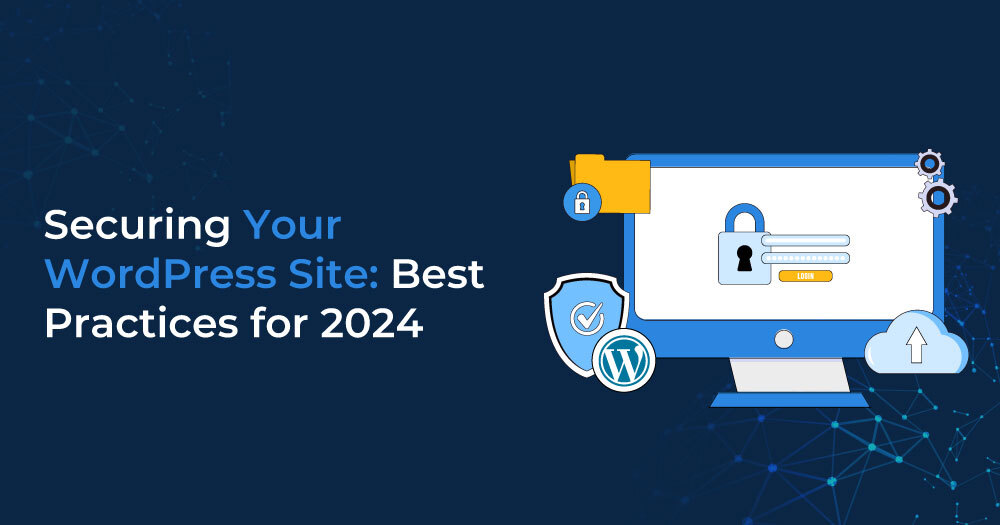In 2024, securing your WordPress site is more crucial than ever. With cyber threats evolving rapidly, it’s essential to implement robust security measures to protect your site from vulnerabilities. Here are the best practices to ensure your WordPress site remains secure:
1. Ensure WordPress Core, Themes, and Plugins are up to date
Regular updates are vital for maintaining the security of your WordPress site. Developers constantly release updates to patch security vulnerabilities and improve functionality. Here’s what you need to do:
- Enable Automatic Updates: For minor updates, enable automatic updates to ensure your site is always running the latest version.
- Manual Updates: Regularly check for and apply updates for major WordPress releases, themes, and plugins.
- Remove Unused Plugins and Themes: Deactivate and delete any plugins or themes you’re not using to reduce potential vulnerabilities.
2. Strong Passwords and User Management
Ensuring strong passwords and effective user management is fundamental for WordPress security. Follow these steps:
- Create strong passwords: Make sure they are complex and contain letters, numbers, and special characters. Tools like password managers can generate and store these securely.
- Two-Factor Authentication (2FA): Implement 2FA for all users to add an extra layer of security.
- Limit Login Attempts: Use plugins that limit the number of login attempts to prevent brute force attacks.
- User Roles and Permissions: Assign the appropriate roles to users and ensure they have the minimum necessary permissions to perform their tasks.
3. Secure Your Login Page
The login page is a common target for hackers. Here are some ways to secure it:
- Change the Default Login URL: Use plugins like WPS Hide Login to change the default login URL from ‘/wp-admin’ to something unique.
- Add CAPTCHA: Implement CAPTCHA on your login page to block automated login attempts.
- Disable Login Hints: By default, WordPress gives hints if a username or password is incorrect. Use security plugins to disable these hints.
4. Implement SSL Certificates
SSL certificates encrypt data transferred between your server and users, making it harder for attackers to intercept information. Here’s how to get started:
- Free SSL Certificates: Use services like Let’s Encrypt to obtain free SSL certificates.
- Automatic Renewal: Ensure that your SSL certificates are set to renew automatically to avoid lapses in security.
- HTTP to HTTPS: Force all traffic to use HTTPS by updating your WordPress settings and .htaccess file.
5. Regular Backups
Backups are crucial for disaster recovery. Follow these best practices for backups:
- Automated Backups: Use plugins like UpdraftPlus or BackupBuddy to schedule automatic backups.
- Off-Site Storage: Store backups in remote locations such as cloud storage or external servers.
- Regular Testing: Periodically test your backups to ensure they can be restored successfully.
6. Web Application Firewall (WAF)
A WAF can prevent malicious traffic from reaching your site. Consider the following:
- Cloud-Based WAFs: Services like Cloudflare or Sucuri offer cloud-based WAFs that protect against a variety of threats.
- Plugin-Based WAFs: Plugins like Wordfence Security offer WAF functionality that integrates directly with WordPress.
7. Monitor Your Site for Malware
Continuous monitoring aids in the prompt detection and response to security threats. Here’s what to do:
- Security Plugins: Install plugins like Sucuri Security or MalCare to scan your site for malware regularly.
- Security Audits: Perform periodic security audits to identify and fix vulnerabilities.
8. Secure File Permissions
Improper file permissions can expose your site to security risks. Set the correct file permissions as follows:
- Files: Set file permissions to 644.
- Folders: Set folder permissions to 755.
- wp-config.php: Set permissions for wp-config.php to 440 or 400 to prevent unauthorized access.
9. Disable XML-RPC
XML-RPC can be a target for brute force attacks. Disable it if you’re not using it:
- Disable via Plugin: Use plugins like Disable XML-RPC to turn off this feature.
- Manual Disabling: Add code to your .htaccess file to block XML-RPC requests.
10. Regular Security Audits
Conduct routine security audits to discover and address vulnerabilities:
- Security Plugins: Utilize plugins that offer comprehensive security scanning and reporting.
- Third-Party Services: Consider services like WP Scan for more thorough security assessments.
Conclusion
Securing your WordPress site requires a proactive approach and continuous effort. By following these best practices, you can significantly reduce the risk of security breaches and ensure your site remains safe in 2024. Remember, a secure site not only protects your data but also builds trust with your users, which is invaluable for your online presence.
For more information and professional hosting solutions, visit 10GB Hosting.
